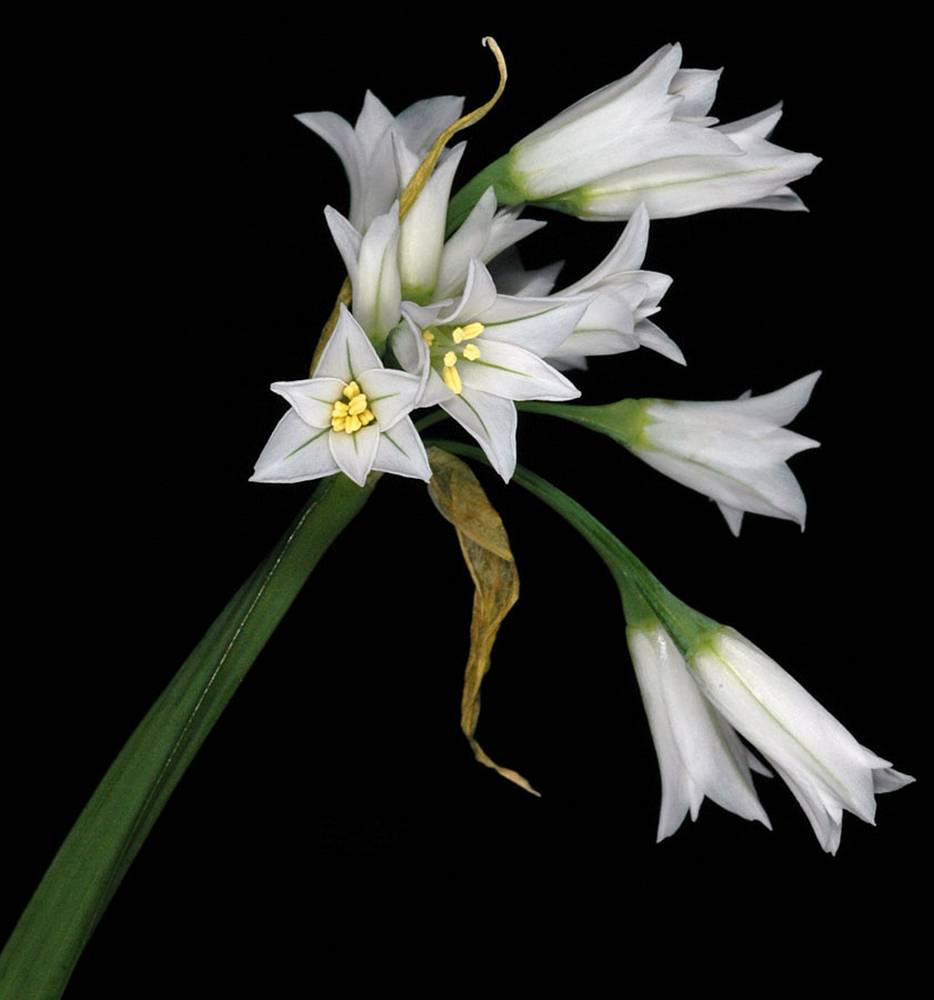Allium triquetrum
Allium campanulatum
three-corner leek
Sierra onion
5–20+; increase bulbs absent or more or less equaling parent bulbs, never appearing as basal cluster; ovoid;
outer coats enclosing renewal bulbs; more or less translucent, obscurely cellular-reticulate; thin, membranous; meshes delicate;
cells vertically elongate, contorted; without fibers.
1–3, producing cluster of stalked basal bulbils above roots or filiform rhizomes to 10 cm and terminated by bulbils; ovoid;
outer coats enclosing 1 or more bulbs, membranous, cellular-reticulate;
cells more or less quadrate;
walls very sinuous; without fibers.
persistent, green at anthesis, 2–3;
blades solid; flat, not falcate; more or less keeled, 15–50 cm × 3–15 mm;
margins entire.
persistent, withering from tip by anthesis, 2;
blades solid; flat, distinctly concave-convex, 8–40 cm × 1–5 mm.
persistent, clustered; erect; solid, sharply 3-angled, 10–40 cm × 1–10 mm.
persistent; solitary or clustered, 1–3; erect; solid; terete, 10–30 cm × 1–5 mm.
persistent; lax; loose, 3–15-flowered; more or less 1-sided;
pedicels 15–25 mm;
spathe bracts 1–2.
persistent; erect; loose, 10–50-flowered; more or less globose;
pedicels 10–20 mm, becoming flexuous and mostly strongly deflexed in fruit;
spathe bracts 2–3.
becoming pendent, 10–18 mm;
tepals erect to spreading, lanceolate; more or less equal, white with prominent green midrib;
margins entire;
apex acute;
stamens included;
ovary crestless;
stigma scarcely thickened, unlobed.
5–8 mm;
tepals spreading, lanceolate to ovate; more or less equal; rose to purple (rarely white) with darker purple basal crescent on ventral side, keeled in fruit, becoming erect; more or less shiny; rigid;
margins entire;
apex acuminate, strongly involute at tip;
stamens included;
ovary crested with 6 prominent processes;
stigma scarcely thickened, unlobed.
=18.
=14, 28.
Allium triquetrum
Allium campanulatum
Road ditches, lawns, and other disturbed moist sites. Flowering Apr–Jul. 400–2800 m. BR, BW, Col, ECas, Lava, Owy. CA; Europe. Exotic.
Allium triquetrum is cultivated for its attractive flowers. It readily escapes in south coastal Oregon and California and has potential to become invasive.
Usually sandy soils and rocky uplands, on open or shaded slopes. Flowering May–Aug. 600–2400 m. BR, BW, ECas, Sisk. CA, NV. Native.
Nick Otting, Richard Brainerd, Barbara Wilson
Nick Otting, Richard Brainerd, Barbara Wilson





